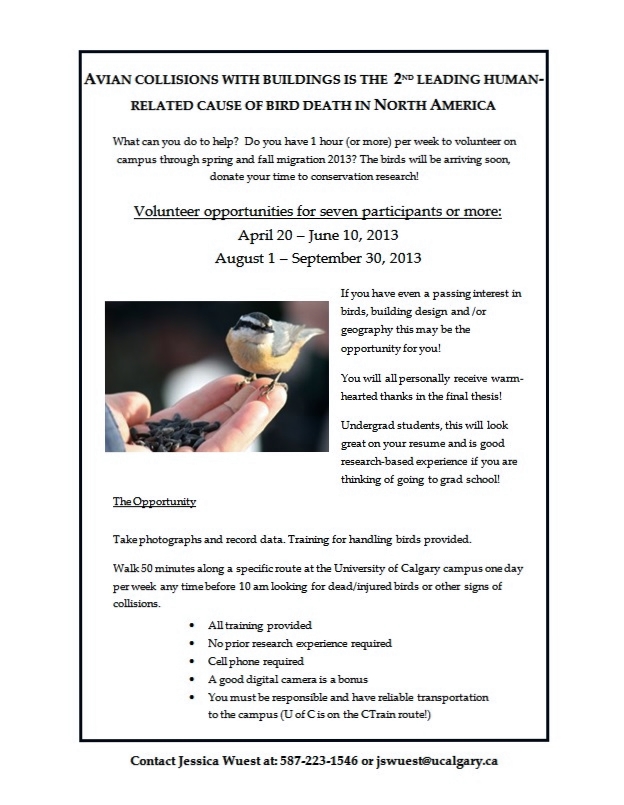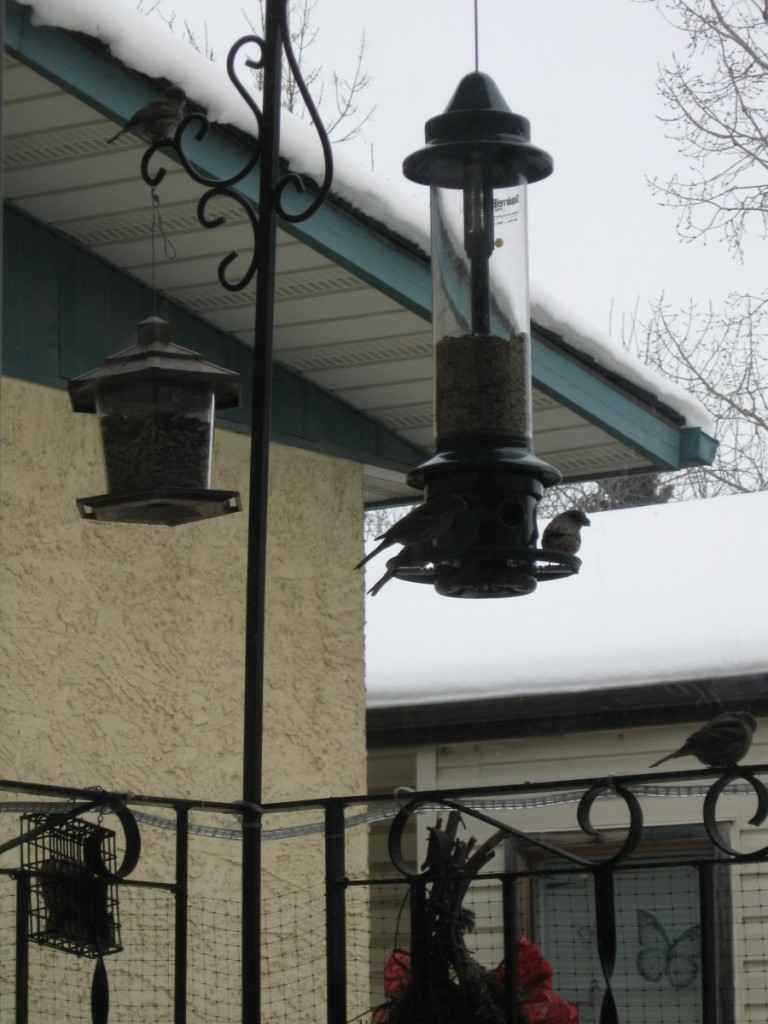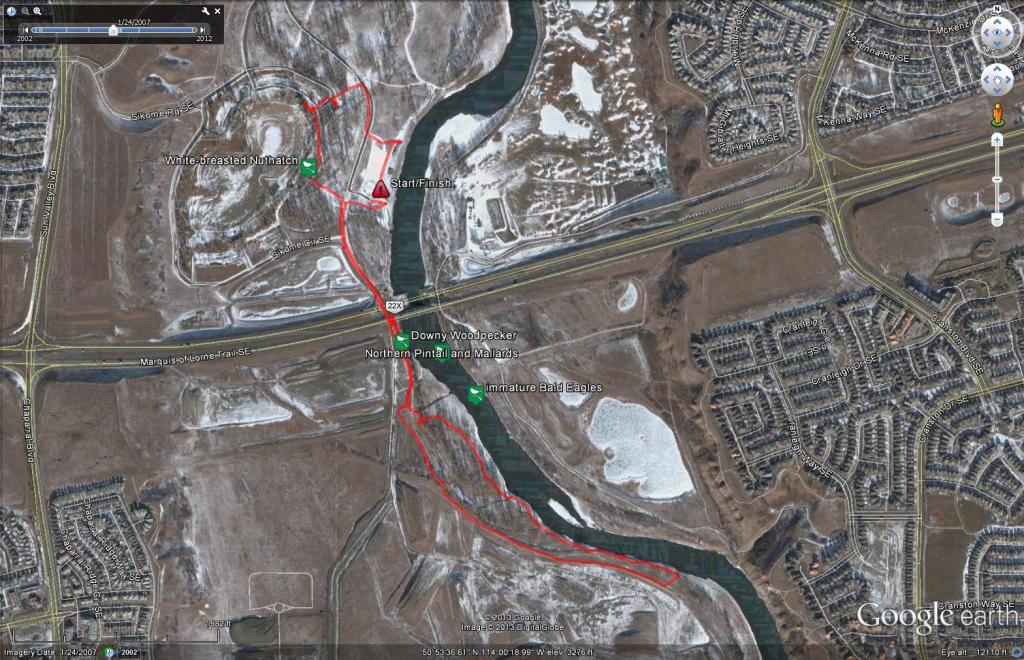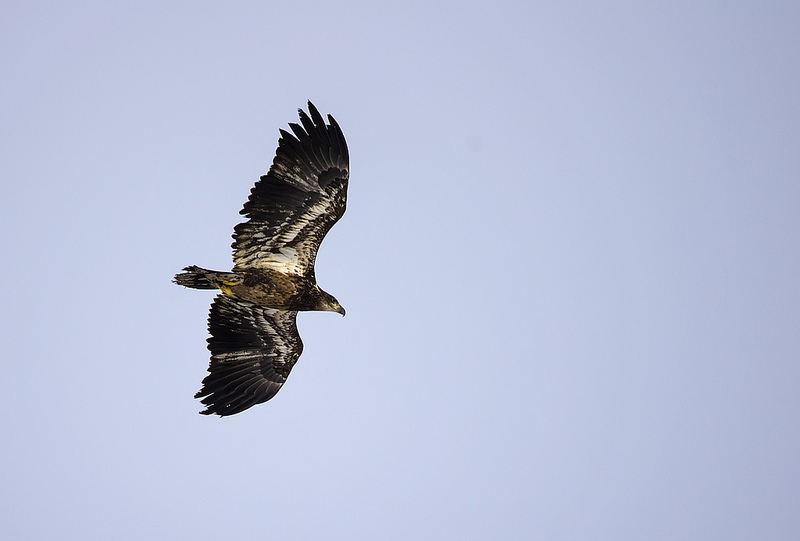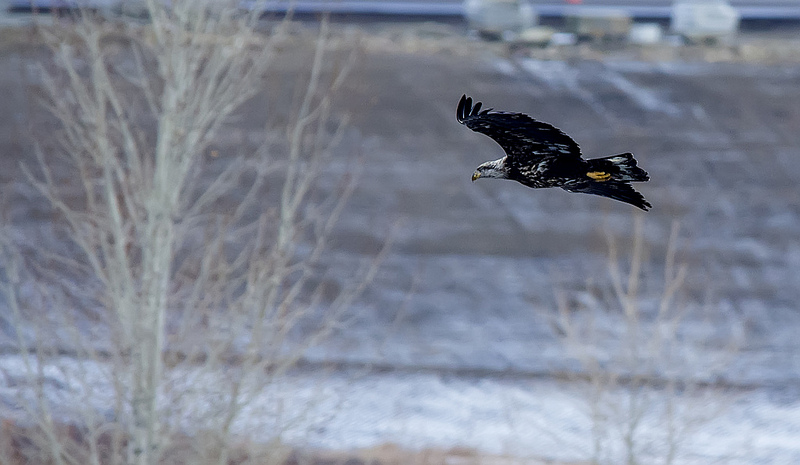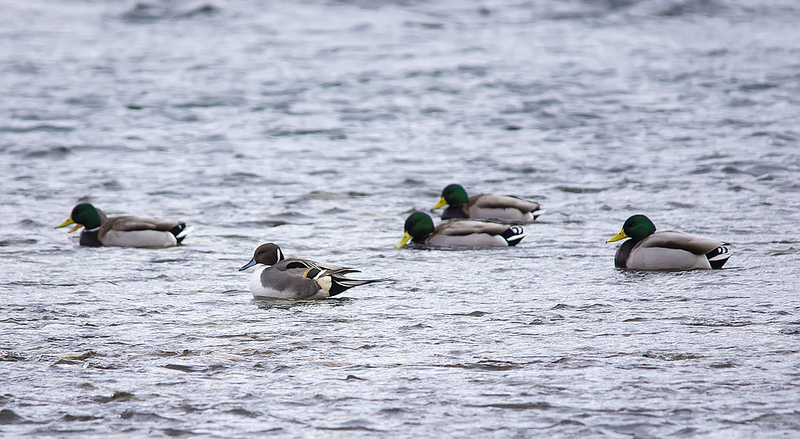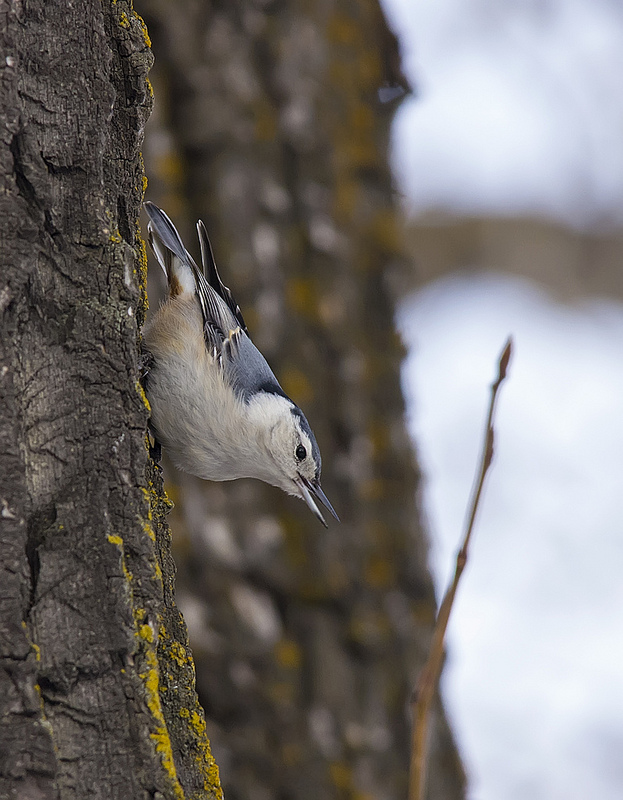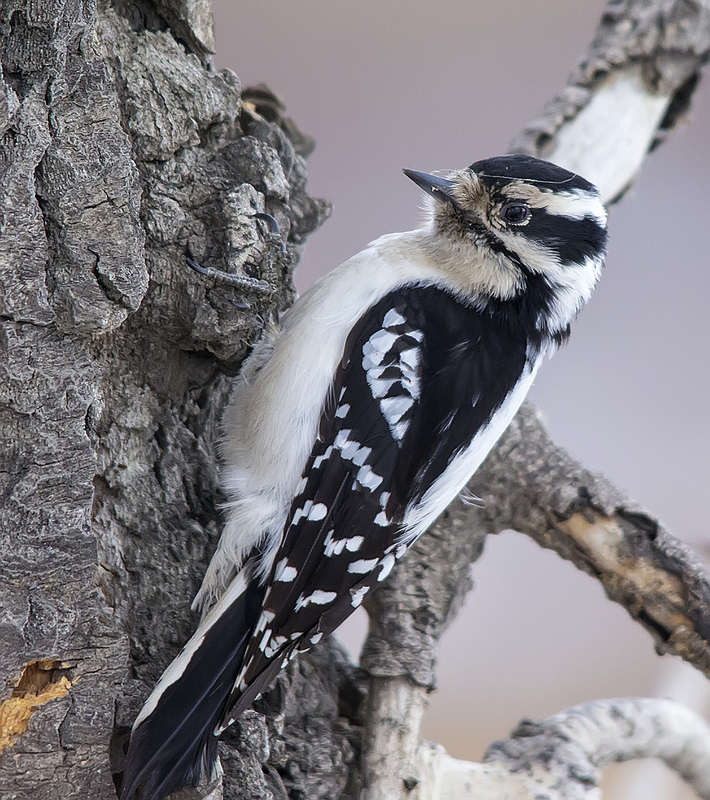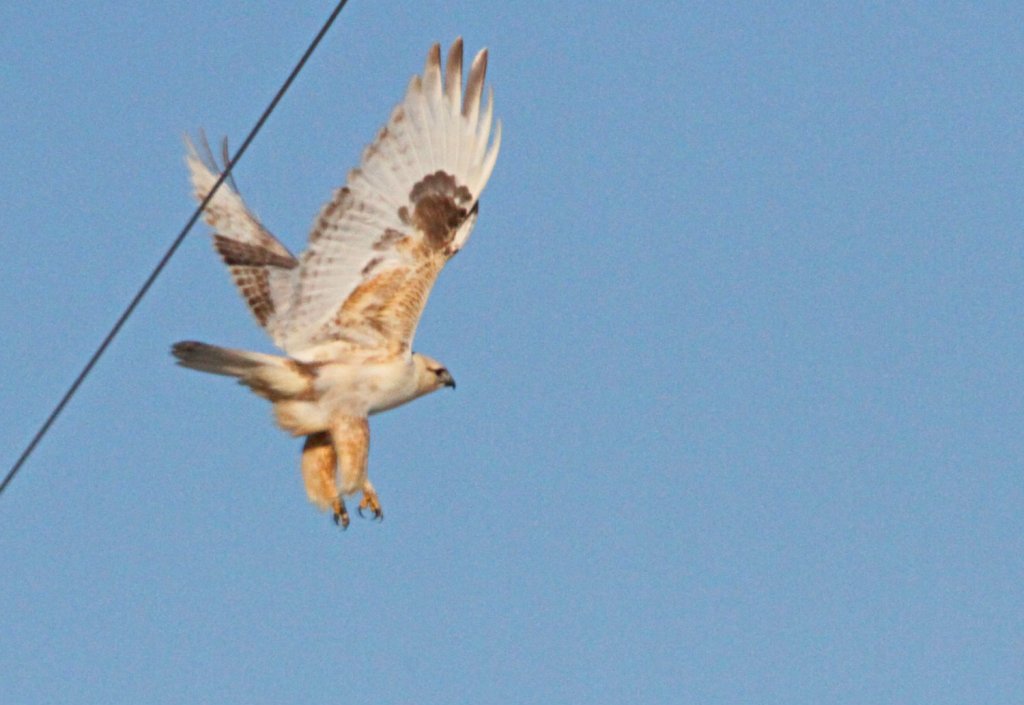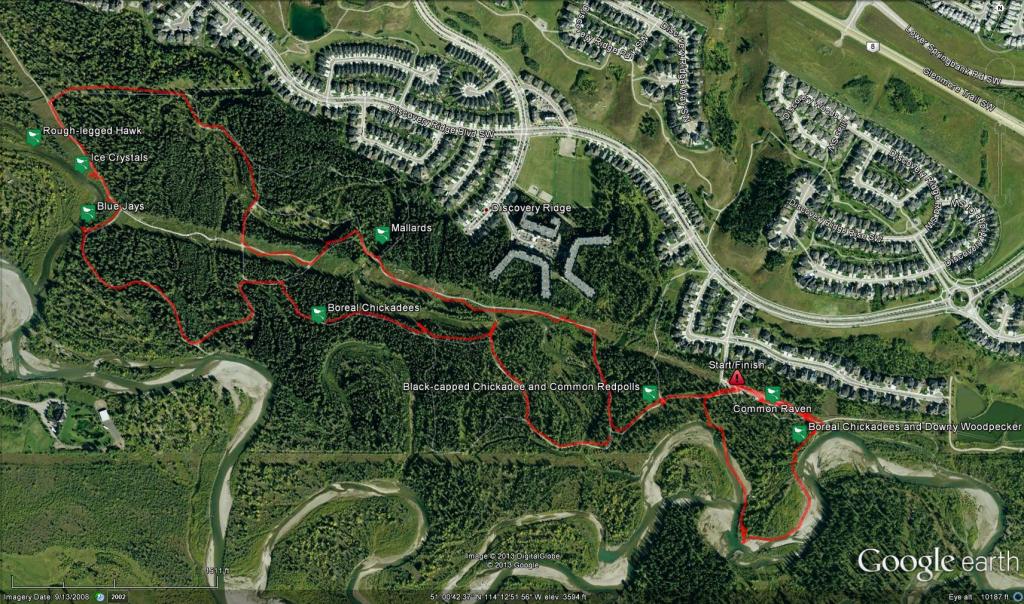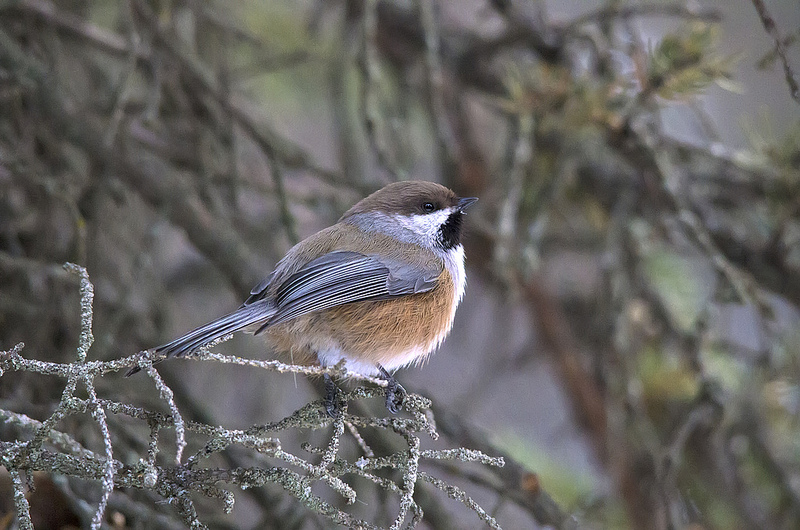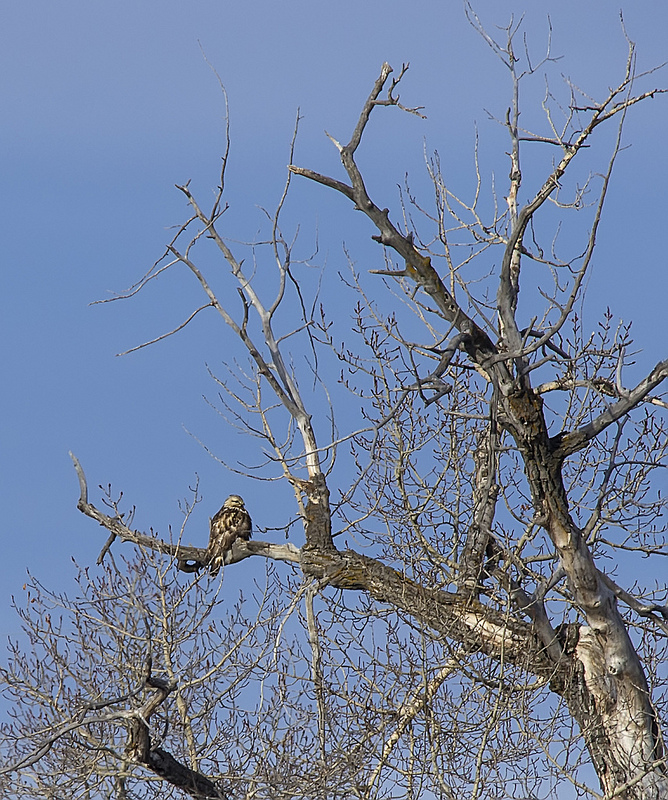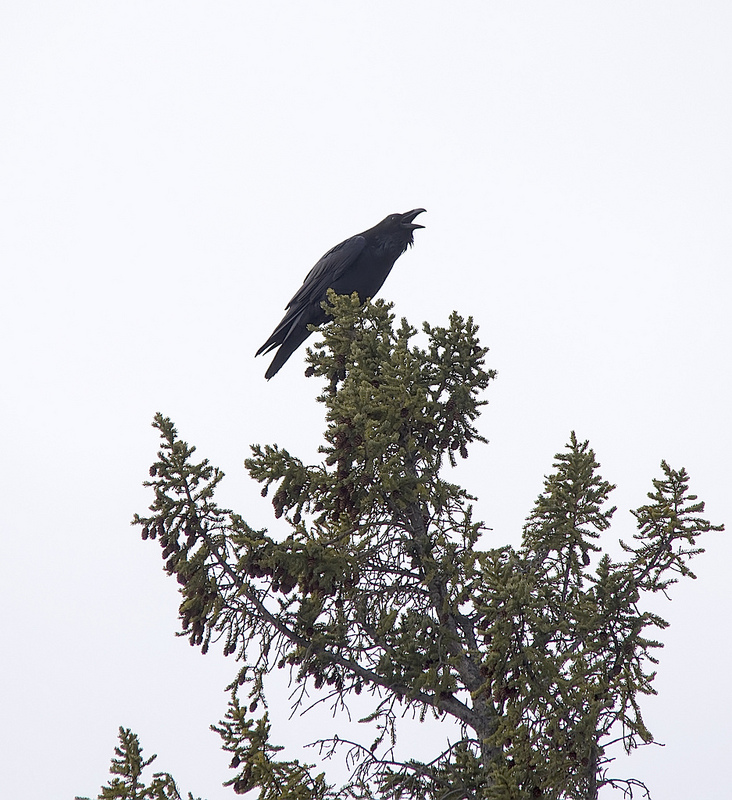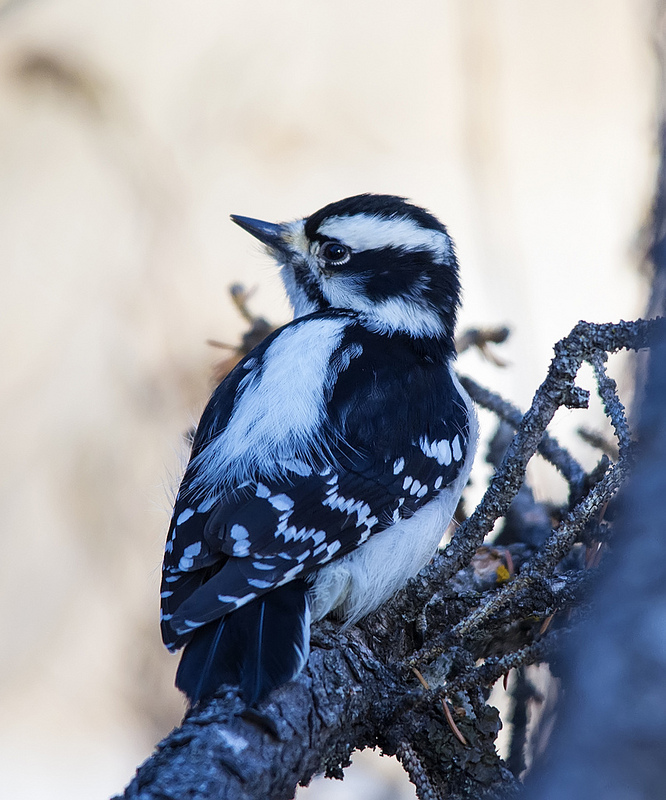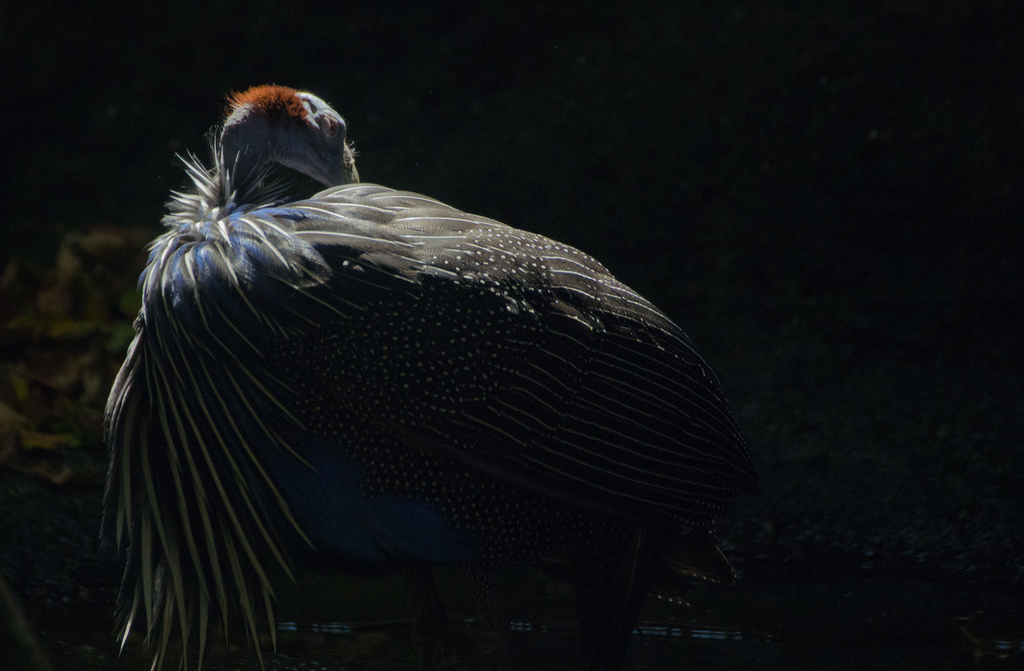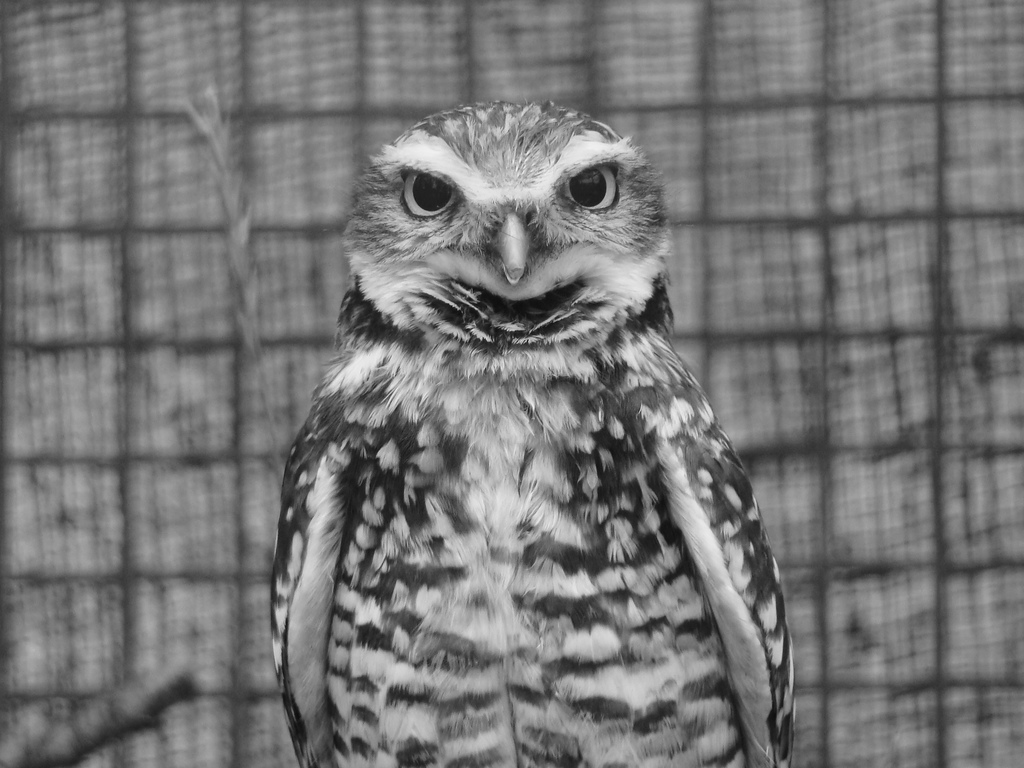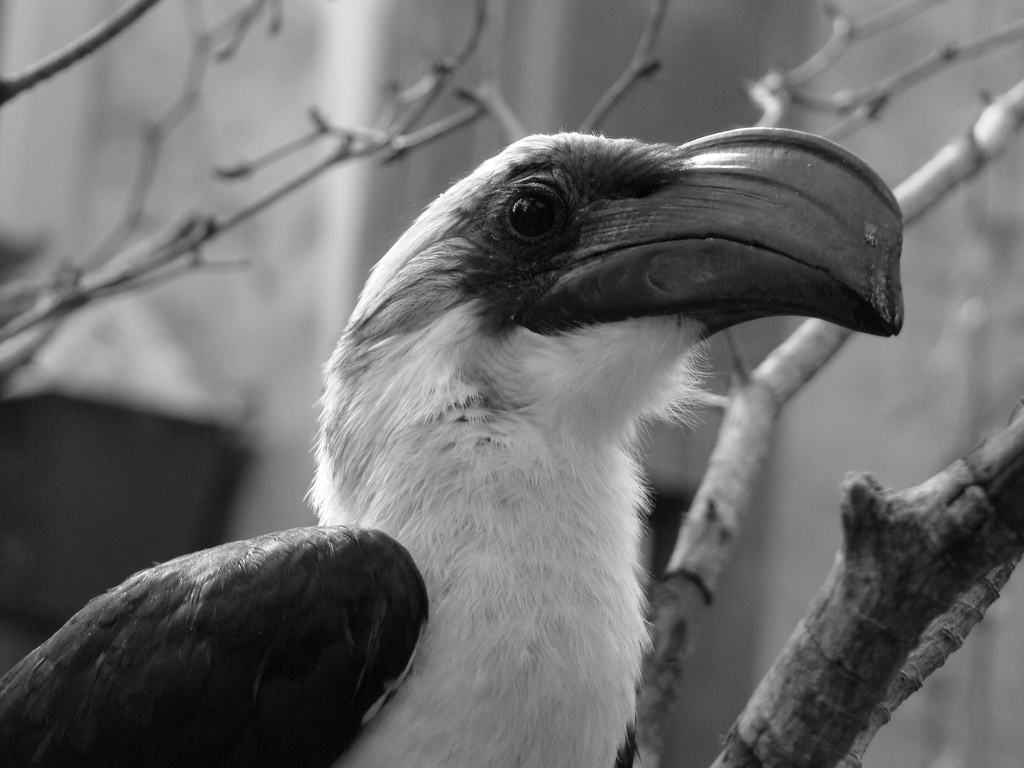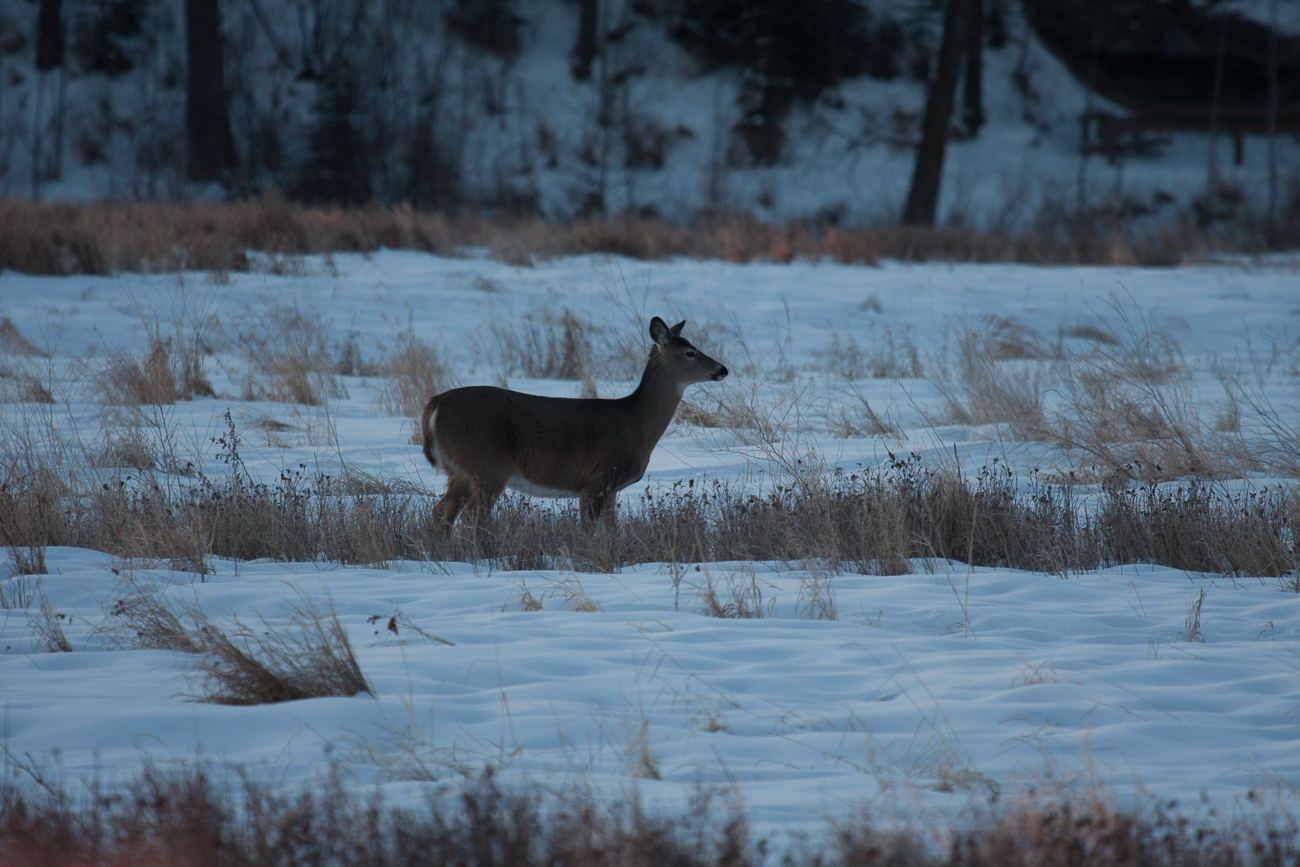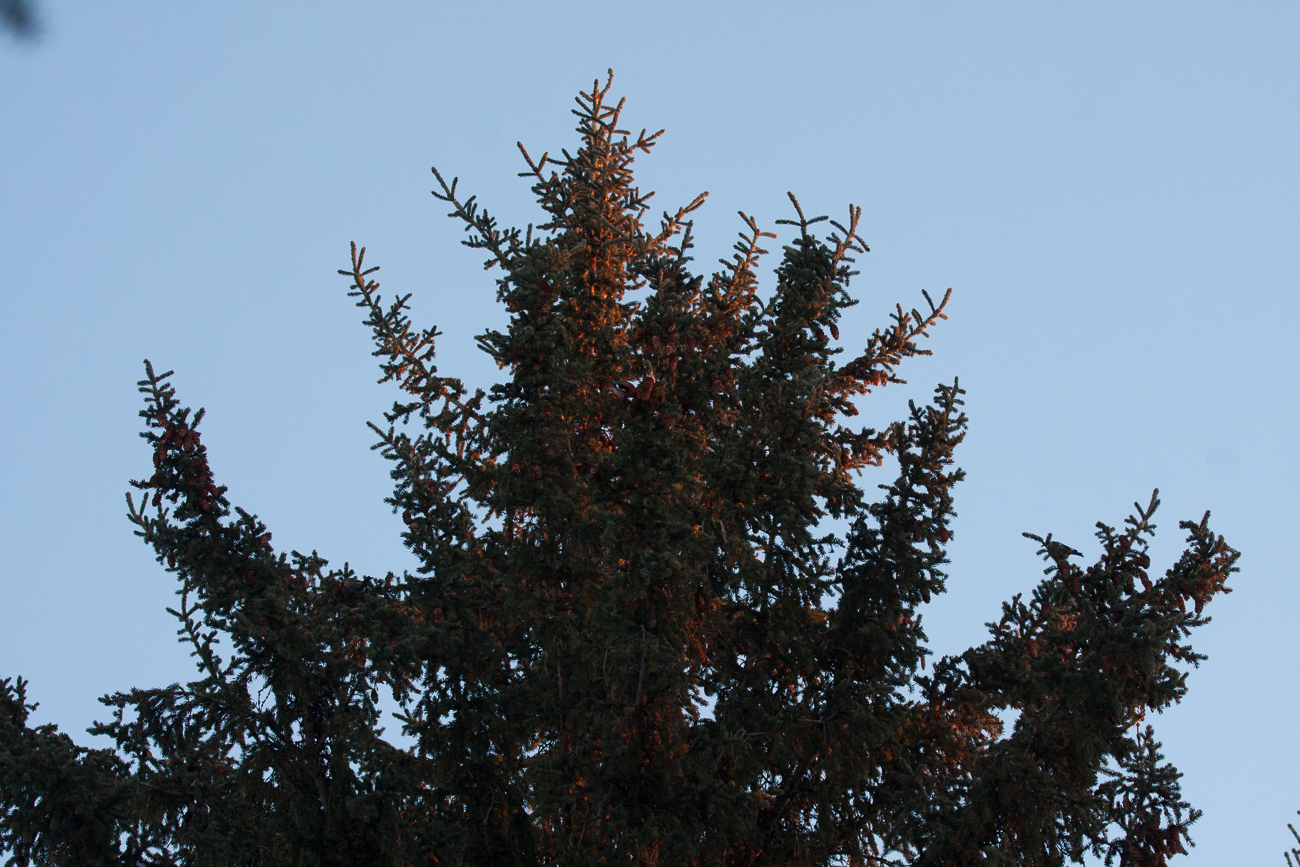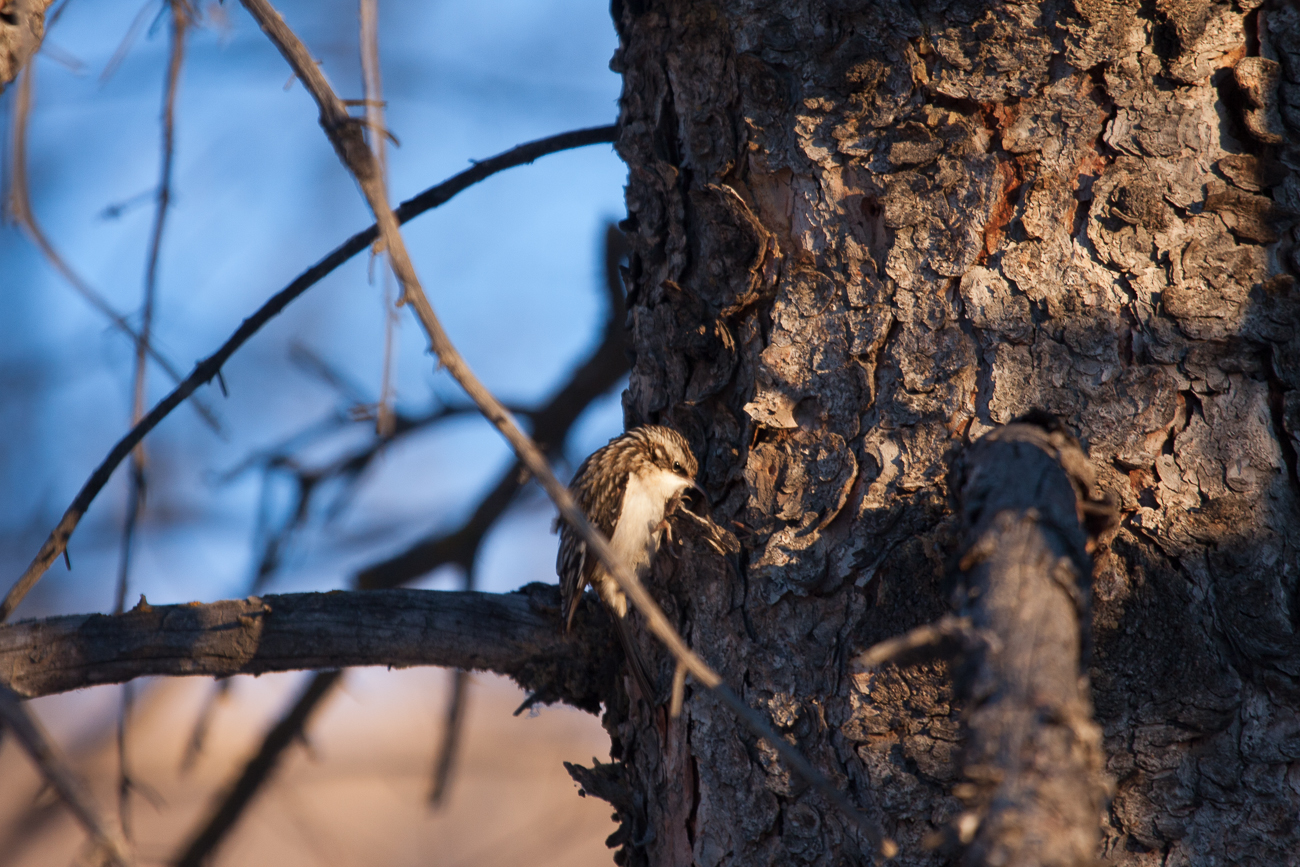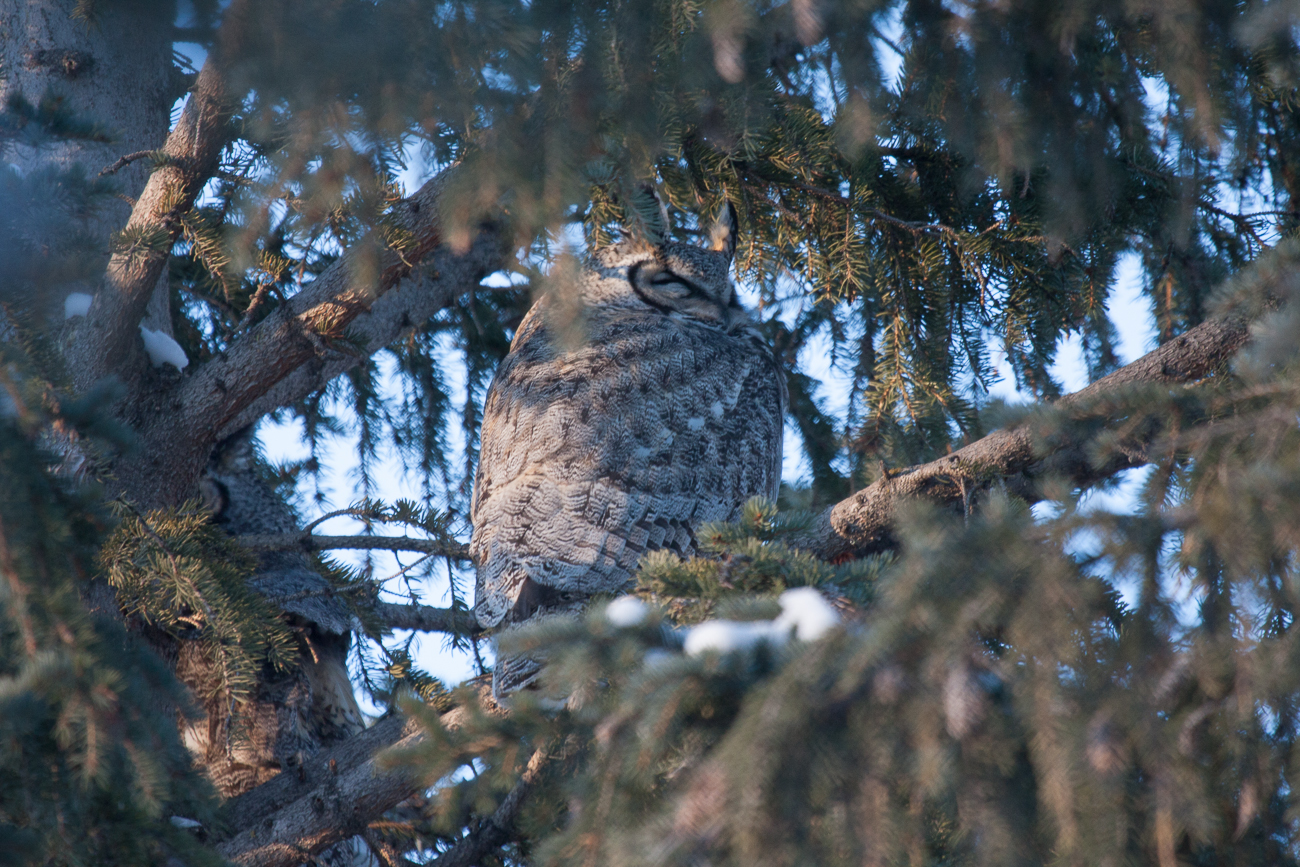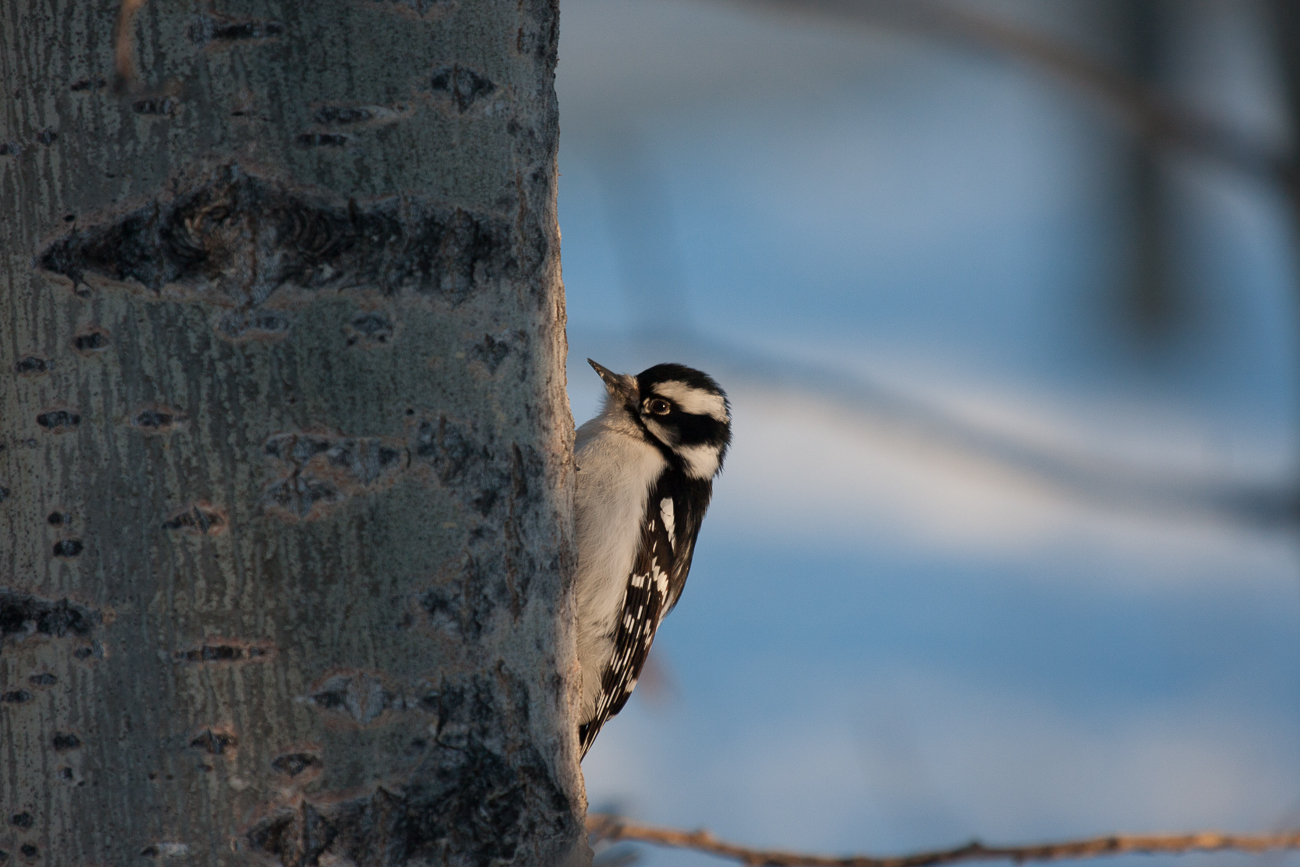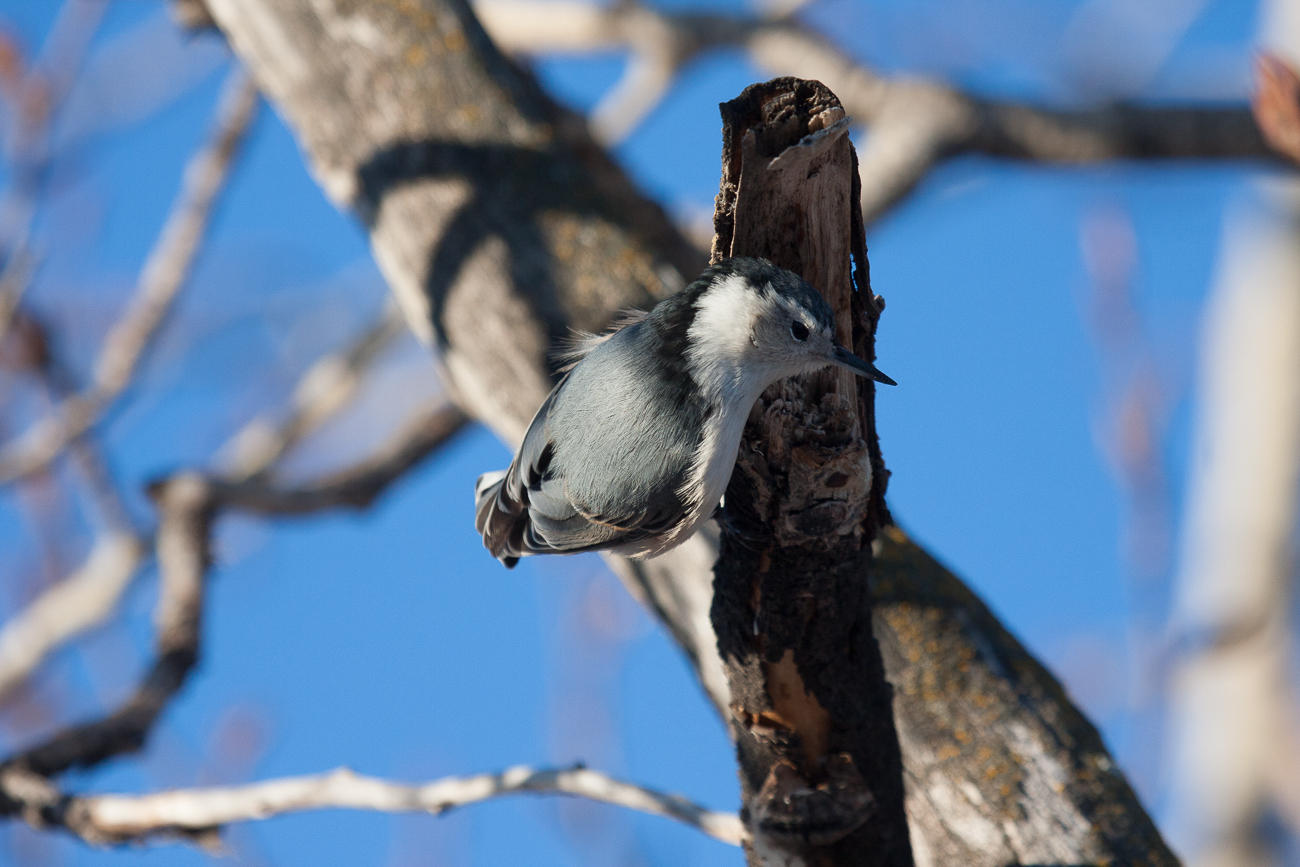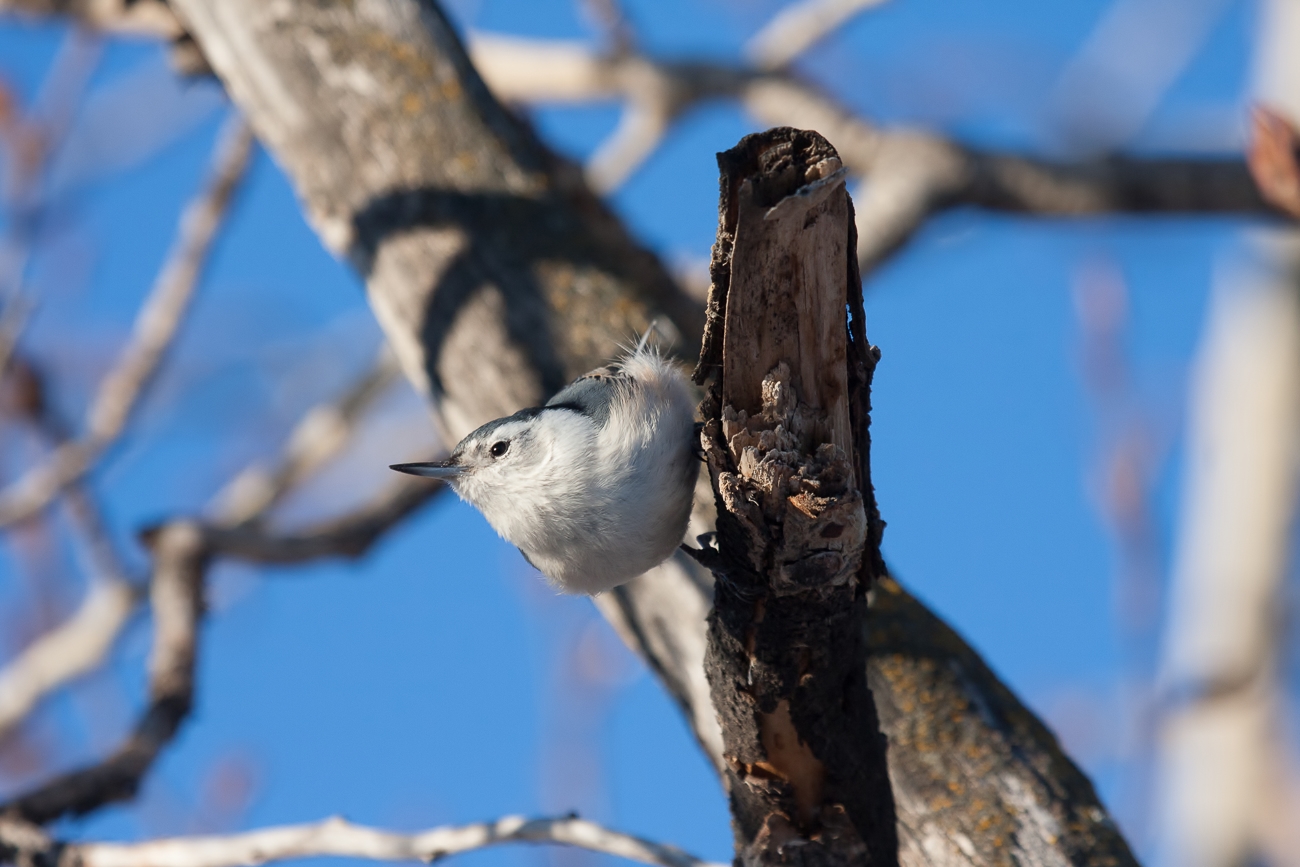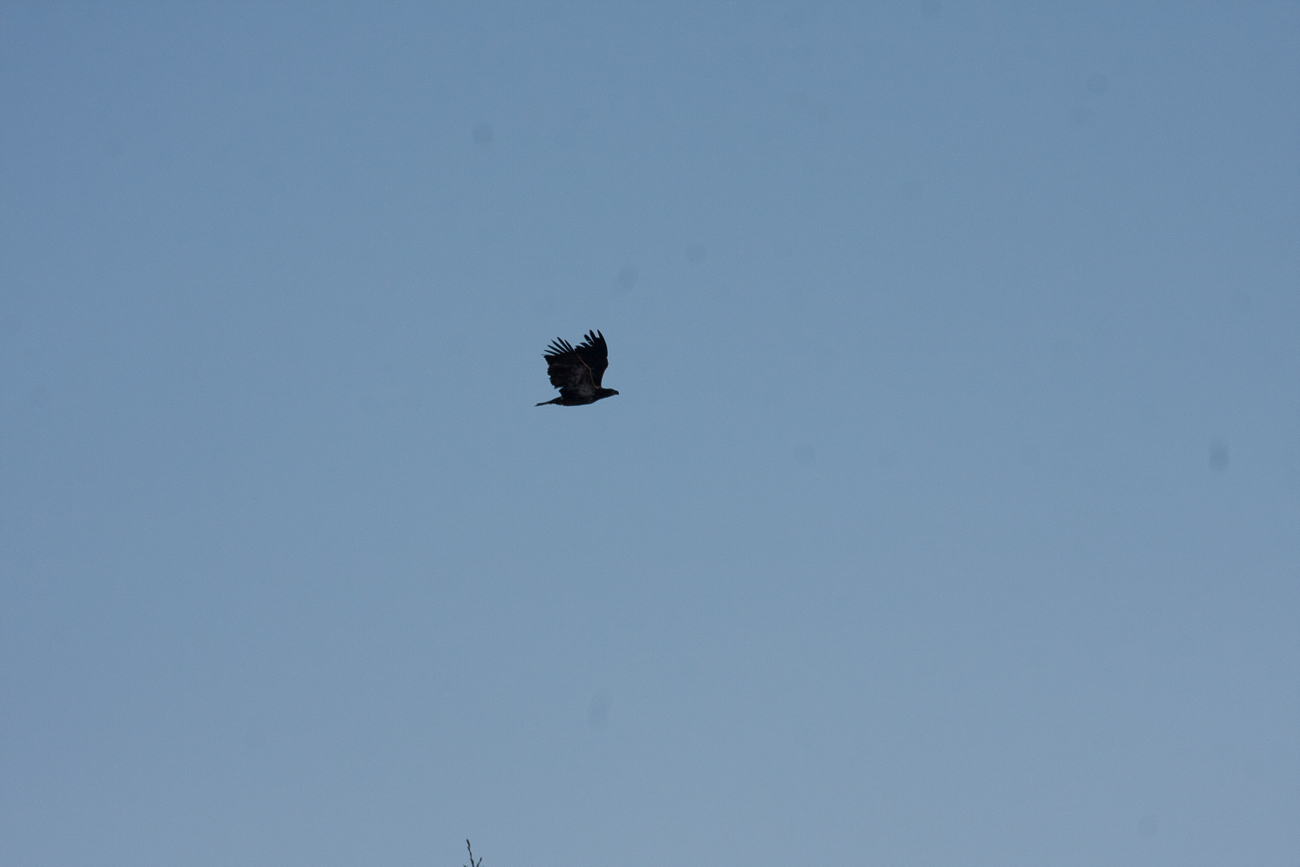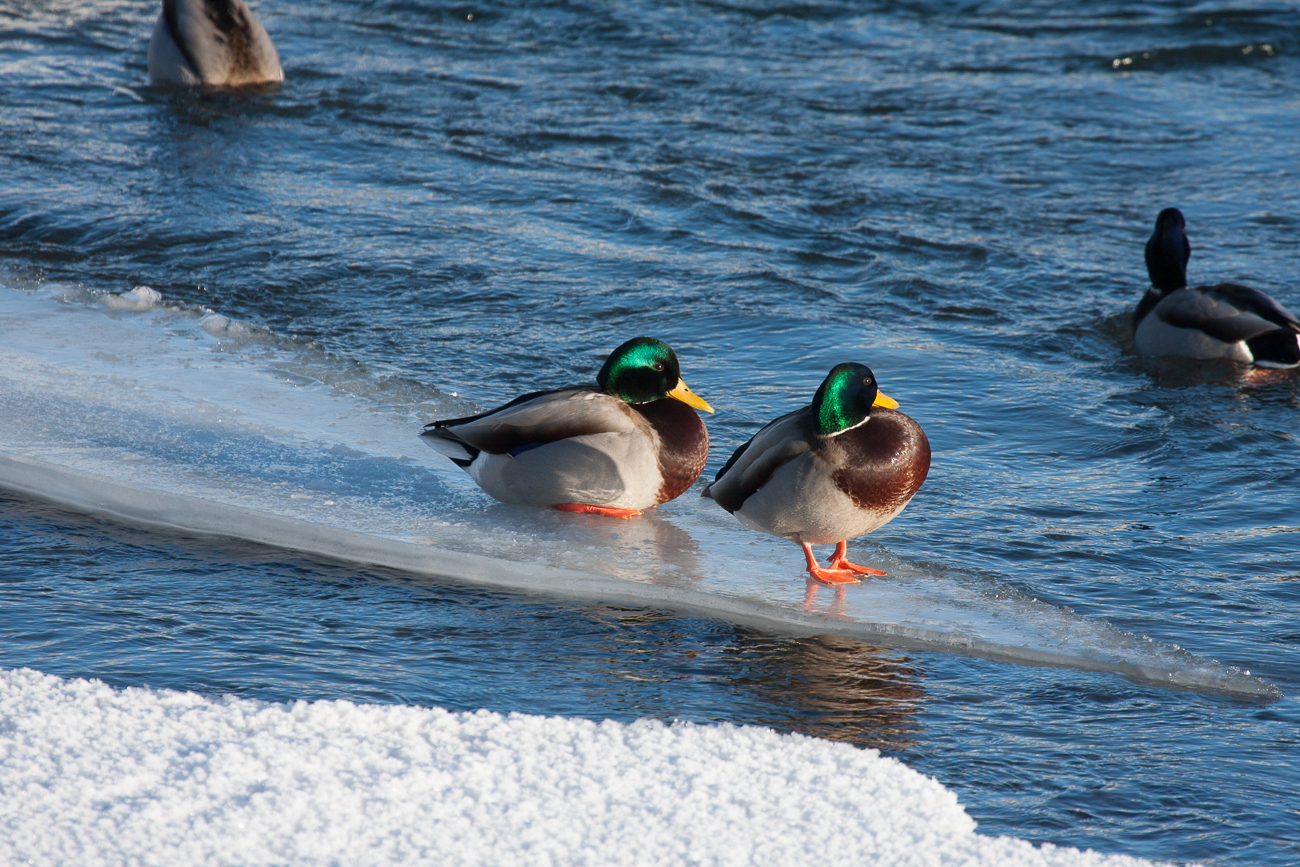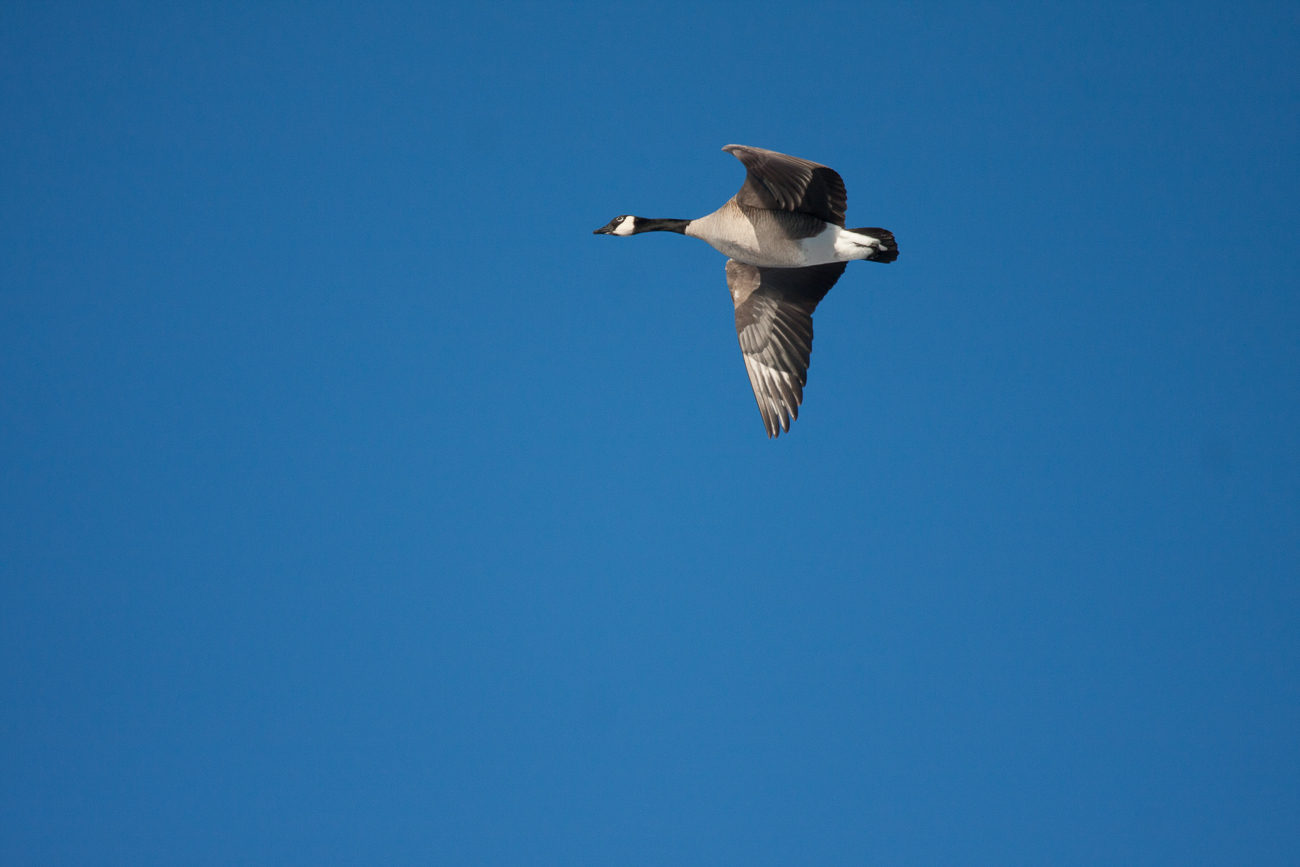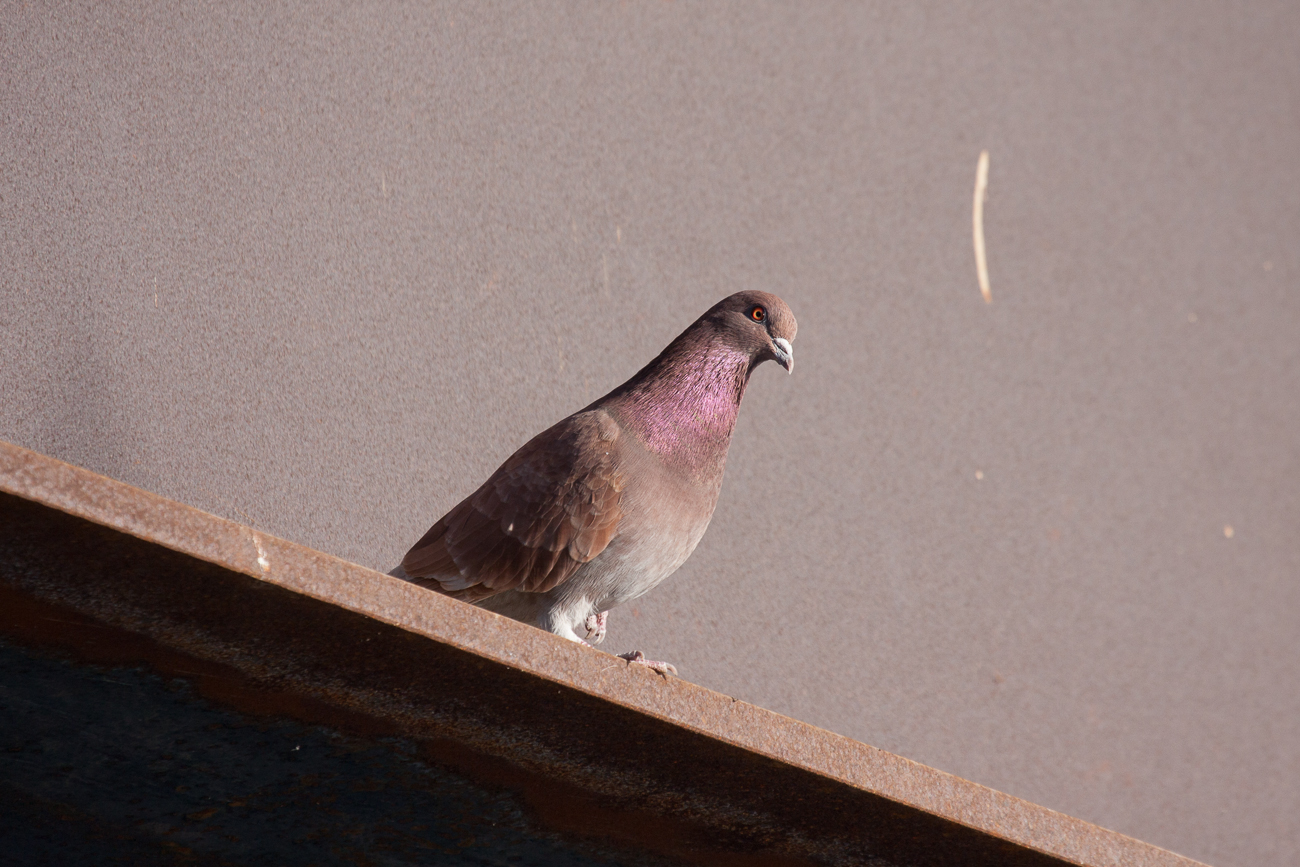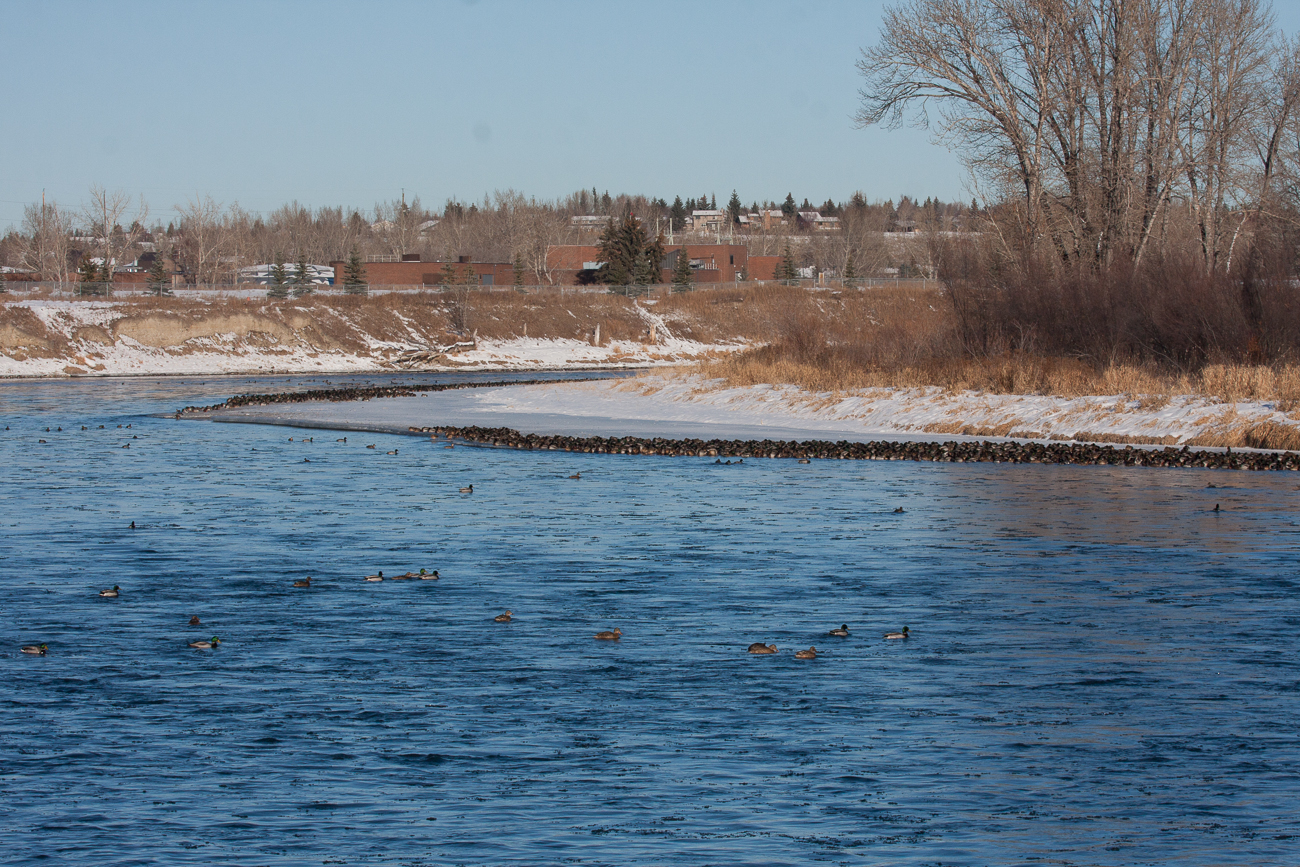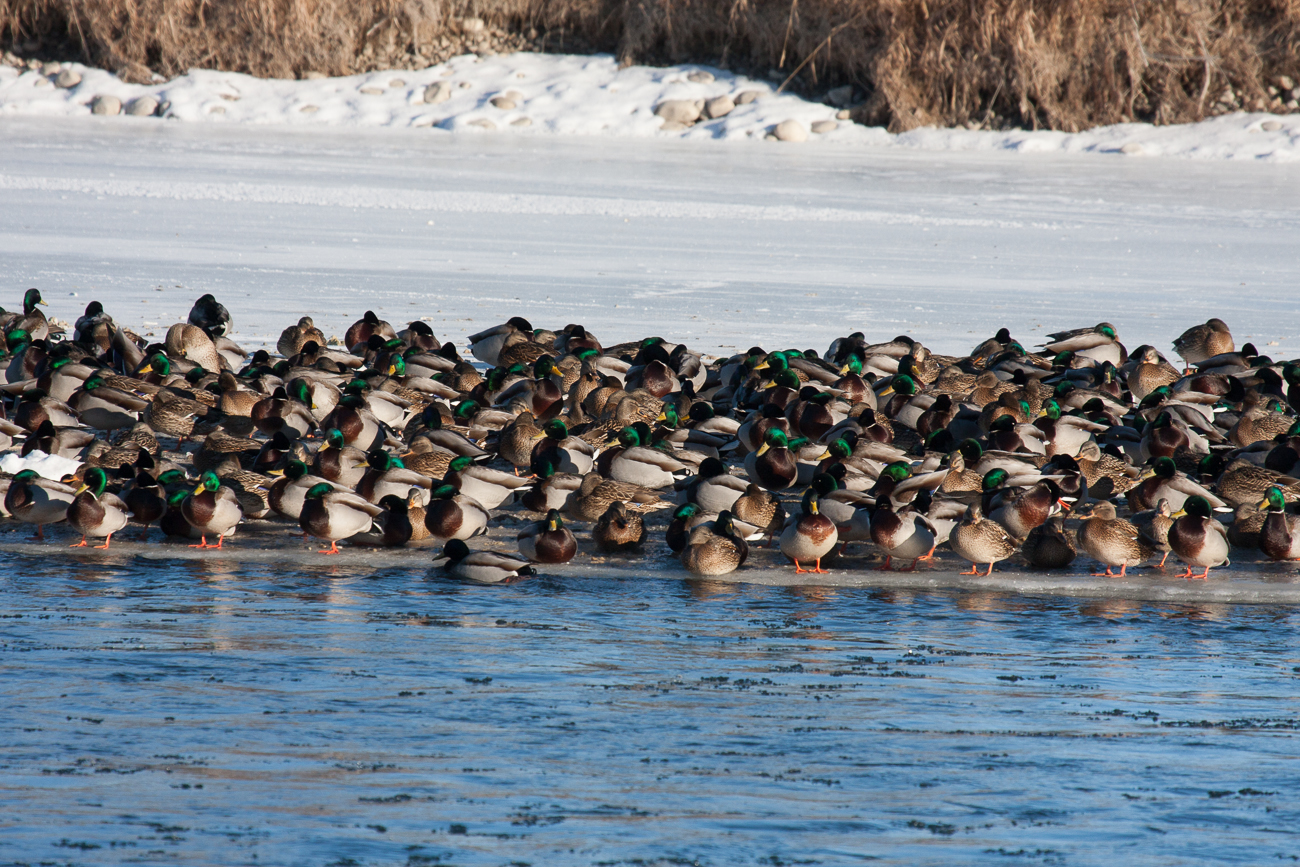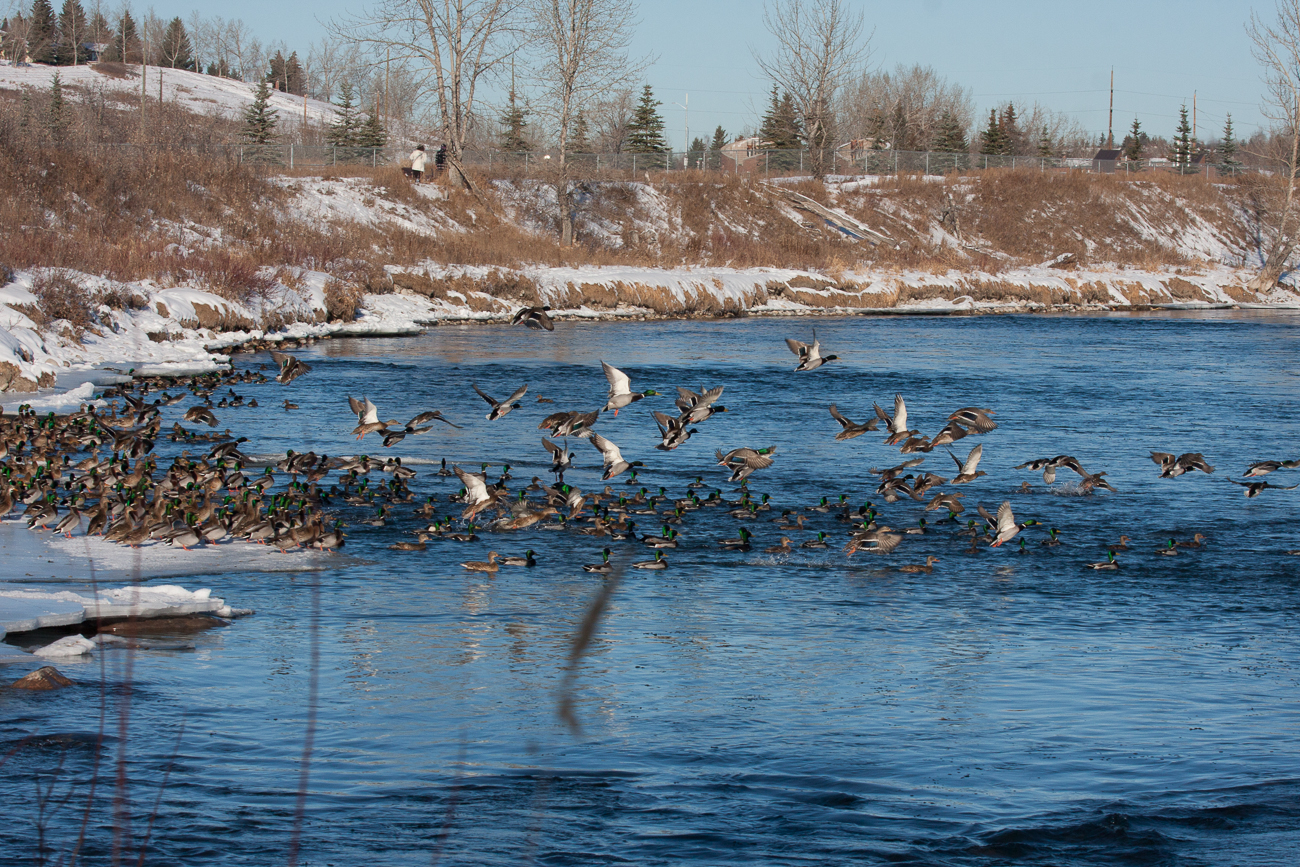Archives
Q & A: Follow-up on Attracting Birds to Feeders
Last May we answered a question from a reader who had been trying unsuccessfully to attract birds to her yard in Calgary. The yard was in an awkward location at a small townhouse without trees or shrubs. Although she was putting out many types of high-quality seeds, the birds were not coming. We gave some advice on attracting birds, which you can read about here. We are happy to report that after nearly a year of persistent effort, finally there are birds coming to the yard.
———-
Hi,
Friends of Fish Creek Winter Birding, Week 6 – Lafarge Meadows
Posted by Dan Arndt
Some weeks are diamonds, and other weeks are coal. Or maybe just cold. And windy. After another week of warm, beautiful temperatures, it was about time for Old Man Winter to come charging through to assert his dominion over Calgary. Our visit to Lafarge Meadows was a cold one, and cut a little short due to the wind, keeping the bird activity to a relative minimum.
- Lafarge Meadows, Fish Creek Provincial Park
Starting at the Boat Launch parking lot, we were treated to quite the show of four adult Bald Eagles flying over the river to the north, flushing up Mallards, Goldeneye, and even Canada Geese by the hundreds. All the while, the ducks and geese along the river near to us stayed put and granted us one gift of a Barrow’s Goldeneye.
We headed south under the bridges, and were once again treated to close flybys of an immature Bald Eagle, flushing up a few Mallards here, but nowhere near as many as the show the adults were putting on to the north.
One of our target birds was a lone male Northern Pintail, which had been seen in the company of Mallards just south of the bridges all week. While we didn’t get good views of it on our way south, a couple of us were given some very good looks on the way back north. Another immature Bald Eagle made a pass over the Mallards and Northern Pintail as our group passed them by, but after a few minutes, they all settled back down near the gravel bar to return to their rest. Unfortunately, many of our group opted to head for the shelter of the wooded areas around Sikome Lake to get out of the biting wind, but for those that missed it, here ‘s the Northern Pintail we saw today.
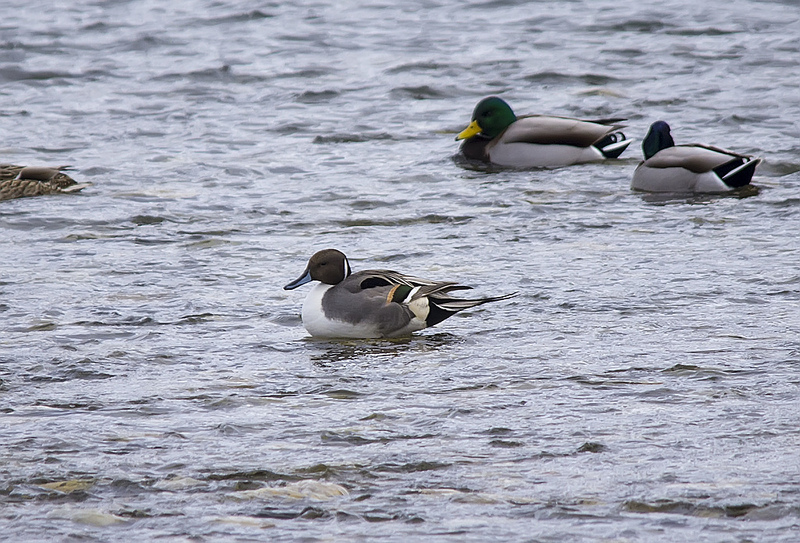
And here is the standout Northern Pintail after preening and settling back down to rest. (Look at that bold bronze speculum!)
We still had another bird we were hoping to find. A pair of Killdeer had been seen just about every day this week along the south stretch of the river, and we trekked on, despite the cold, but in the end, and after a good kilometer of searching and scanning the gravel bars and the far shore in vain, we admitted defeat. While I didn’t get a photo of it, we did get an incredible addition to our list, but our views were all to brief. A Prairie Falcon made a quick dart over the eastern valley wall, scanned the environs below, and after only a minute or two, headed back to the east.
As we began our trip back into the protection of the woods, a few of our old favourites made their appearances. The ever-present Black-capped Chickadees, a pair of White-breasted Nuthatches, and even a lone female Downy Woodpecker came to visit as we finished up our time with the Northern Pintail. I suspect she may have been waiting for the right time to photobomb the waterfowl!
See you again next week!
Leucistic Rough-legged Hawk
Posted by Matthew Sim
We’ve done posts here on this blog about leucism before, which is when a bird has reduced pigmentation, meaning it has more white in it’s feathers than normal for the species. We’ve had some examples before, including a leucistic House Finch, American Robin, Ruby-throated Hummingbird and others. For the past few months, Calgary has had a very neat leucistic bird in the area. This Rough-legged Hawk frequents the area around Highway 40, just west of Calgary.

Now compare this with a more normal Rough-legged Hawk.
On January 1rst, I found this leucistic hawk on Highway 40 near its intersection with Range Road 40.
Friends of Fish Creek Winter Birding 2013, Week 3 – Griffith Woods
Posted by Dan Arndt
There’s nothing quite like a quiet Sunday morning bird walk, and the gorgeous scenery of Griffith Woods was no exception. The unfortunate part is that it seemed like the birds decided that it was time for them to take a walk too, making it a little too quiet in the park!
The light wasn’t the greatest, but the company was excellent, and while the birds were scarce, it was otherwise a great morning.
Starting at the parking lot on the east end of the park, we worked clockwise around the park. While we heard a Common Raven or two on the early part of our walk, we didn’t get looks at any birds whatsoever aside from a Black-capped Chickadee or three for at least half an hour after our start.
Our first good looks were of a group of Boreal Chickadees, along with a number of Black-capped Chickadees and Red-breasted Nuthatches, who came down to investigate what all the commotion was. After a few minutes of posing and checking us out, they moved on, but not before allowing us some very close looks and a few photos.
A few flyovers of some Common Redpolls and White-winged Crossbills were the only birds seen for nearly another half hour. Travelling from the east end to almost the very westernmost edge of the park, we were once again granted good looks at a few more species. A pair of Blue Jays began calling to the south of where we were standing, and as we scanned the horizon to the west, this gorgeous Rough-legged Hawk popped into view.
It seemed that our day was finally making a turn for the better, with the sun making an appearance, the birds seemed to become much more active. The ice on the river though, was just stunning.
It was, unfortunately, a short-lived reprieve. Heading back along the pathway was even quieter still. You know it’s a slow winter’s day in Calgary when a small flock of Mallards is the most interesting thing you’ve seen in a while.
It wasn’t completely uneventful on the walk back, but we did get a few nice looks at some more Black-capped Chickadees having a snack on one of the interpretive maps, along with a few Common Redpolls.
Our last bird of the day was our first actual looks at a bird we’d been hearing all day, this Common Raven.
A few of us decided to explore the park a little more, as the sun came out once again, and we did manage to find a Downy Woodpecker and a few very cooperative Boreal Chickadees in near perfect light.
Next week, Carburn Park! I hope there’s a bit more variety there, and there certainly should be greater numbers on the Bow River.
The Calgary Zoo, a birder’s refuge on a cold winter day
Posted by Dan Arndt
Unfortunately I wasn’t able to attend the second week of the Friends of Fish Creek Winter birding course as I was out of town on personal business, but I knew that I’d hate to leave the regular Monday readers high and dry. As such, here is a post I’ve been sitting on for a while, and since the coldest days of winter are still ahead of us, and some folks just can’t handle the cold for long periods of time, here’s a suggestion of somewhere to go to brush up on your exotic bird identification skills!
While birding even in the coldest days can bring out some incredible surprises, there are much warmer places with incredibly gorgeous birds all year round. The Calgary Zoo houses a wide variety of bird species, from native Canadian species such as the Burrowing Owl, Whooping Crane, and Bald Eagle, to exotic birds from all over the world, the ugly-pretty Vulturine Guineafowl from Central Africa, the ever-popular and charismatic Rockhopper Penguin, and the beautiful and majestic Andean Condor, from South America.
While none of these birds would count on any list (except maybe a “Seen in Captivity” list), they’re great subjects to photograph, and familiarity gained with these birds here at home would aid significantly in identifying them if you ever end up in their native habitat looking for their wild cousins. On top of that, the public education and awareness of wildlife that the Calgary Zoo engenders with their live collections, public outreach, and captive breeding programs go much further to increase the popularity and appreciation of all animals, not just the charismatic megafauna that they have on display.
I hope you enjoy the photos of a variety of birds I’ve taken at the Calgary Zoo in the past few years!
Wednesday Wings: Crossbills
These photos were taken by Tim Hopwood over the past two weeks in various locations within the city of Calgary. The first four photos show Red Crossbills (which seem to be more abundant than usual in the city this winter), and the rest are White-winged Crossbills.
To see more of Tim’s photos, see his blog, Tim J. Hopwood Images.
Postcards from Mexico – Calgary Birds on their wintering grounds
Posted by Dan Arndt
While on vacation, I had planned to look for some of our old favourites from Calgary who might also be down here enjoying the warm weather for the winter. Thankfully, I wasn’t disappointed. I was a little surprised though at just what species I did find down here, and which ones I expected to find, and didn’t.
I do want to clarify too, that many of these birds spend all year long down here, but their range extends all the way back home to Calgary, which, as the crow flies, is about 4100 km. Quite staggering, when you consider that many of them make the migration from Calgary to this part of the world with very few stops for food or shelter.
Here are just a few of our fine feathered friends enjoying the sun, sand, and tequila down here in Mexico!
New Year’s Day Bird Count 2013
Posted by Bob Lefebvre
Once again I participated in the Fish Creek Park half-day bird count on New Year’s Day. Though not an official Christmas Bird Count, it is now in its 20th year. Six teams spent the morning counting birds in different parts of this huge park, and then we met at noon to compile the results.
This year I joined Phil Cram’s team in the east end of the park. We covered the Bow Valley Ranch, Sikome, LaFarge Meadows, and Hull’s Wood areas.
It was a beautiful mild sunny day, but we found it pretty quiet when we started at Bow Valley Ranch. We did have six White-tailed Deer pass through before sunrise.
The first mammal of the day – and year.
We failed to find any roosting Great Horned Owls in the row of spruces, and it took a while before we heard even a chickadee. Eventually we heard some White-winged Crossbills in the tall spruces.
Yes, there are crossbills in this photo.
Next we heard the high-pitched call of the Brown Creeper, and found four of them in the area.
Brown Creeper.
Heading over to Sikome, we quickly found the two Great Horned Owls that roost there every winter in the trees behind the buildings.
There are two owls here – one of them is doing its spruce-bark impersonation.
Again, the area was pretty quiet. We did get a flicker and this Downy Woodpecker (but failed to find a Hairy Woodpecker or White-breasted Nuthatch, which are often seen there).
Downy Woodpecker.
Over at the Boat Launch we had four White-breasted Nuthatches, and a flyover of a young Bald Eagle.
Immature Bald Eagle.
On the river we failed to find anything besides Canada Geese, Mallards, Common Goldeneyes, Buffleheads, and Common Mergansers. We had hoped for Killdeer, Barrow’s Goldeneyes, and perhaps some other species of ducks.
Mallards on the ice.
Canada Goose flying over.
At the highway 22X bridge we checked for Rock Pigeons – in these bird counts every new species is important. You never know if any of the other groups will see one or not.
Rock Pigeon, with colours that match the rust on the bridge.
Our final stop of the morning was at Hull’s Wood, where we saw a staggering number of Mallards – about 8000 (some of them were outside our territory and were counted by another group of birders). Again, there were few other species except the usual.
Our best bird of the day was the last, a Northern Goshawk that was being harassed by magpies on the hillside. We didn’t get great looks (and no photos) before it departed.
In the end we had 19 species of birds (and four mammals – Coyote, Eastern Gray Squirrel, and White-tailed Jackrabbit in addition to the deer). A good start to the new year.
Finding Birds with eBird
Posted by Bob Lefebvre
Note: You don’t have to be an eBird user or have an eBird account to do this. Anyone with an internet connection can use eBird as a resource, so please read on.
eBird, the online database of bird sightings, has many useful features that birders can use to study patterns of bird movements in time and space. The one I use the most is the Interactive Range and Point Maps. This shows a map of all sightings reported for a particular species for any place and time specified. You can set the time period to be as long or as short as you like, and thus see the distribution of the bird.
By setting a short time period of the most recent month or two, you can find out what is being seen in your birding area right now. I will run through an example of the process to show how you can easily find out exactly where your target bird has been seen.
Step 1: Go to the eBird Website home page. (In the example it is eBird Canada, but you could also use the US site.) Your screen will look something like this:
.
Step 2: Click the “Explore Data” tab. There will be three choices: Range and Point Maps, Bar Charts, and Line Graphs.
.
Step 3: Select “Range and Point Maps” to bring up the world map.
.
Step 4: Specify the date range for your search. Click the “Date” tab (which is defaulted to “Year-Round, All Years) to select a time period. In the example, I set it to December only of the current year. It was early December when I did this example, so only sightings from the previous few days would be shown. Then click “Set Date Range” in the green box.
.
Step 5: Select the target species. A new screen has come up with the date range set to “Dec-Dec, Current Year”. Go to the “Species” box and type in the bird. I used “Snowy Owl” in the example. As you type, various species possibilities that fit what you have typed so far will show in the blue box below. Once the correct species name appears in the blue box, click it to select the species.
.
Step 6: Zoom in on the map to see sightings in your area. You could also at this point set the location (to Calgary, for example) in the upper right-hand box, but it is just as easy to zoom in on the Calgary area by double-clicking your mouse or scrolling your mouse wheel until you get close. Any area that is purple on the map will have at least one Snowy Owl sighting.
.
Below, I have zoomed in to the Calgary area. Paydirt! Snowy Owls have been reported inside the two purple rectangles. Now I just have to zoom in a little closer on them to see the exact locations.
.
Step 7: Get the sighting data from a point location. The two red teardrops show the exact locations reported for Snowy Owls. By clicking on them, you bring up the sighting information. In the example, I clicked the westernmost teardrop and discovered that it was Daniel Arndt who reported one owl on December 1. You could now scroll in some more to see a close-up map of the area with the names of the roads. But you can also get more information from Dan’s checklist.
.
Step 8: See the checklist from the reported sighting. Click “Checklist” next to the name of the observer, to bring up all the particulars of the sighting. If there had been other species seen at that location, they would have been listed there.
.
Step 8: See the location on a Google map. On the above screen, click “Map” at the end of the location line to get a Google map with the precise location and GPS coordinates. You can now drive to the exact spot where Dan saw this owl, where, if you’re lucky, it will be still be sitting on the same pole.
.
Give this a try to see how easy it is to find out what’s being seen in your area. Of course, the only sightings you’ll find are those submitted by eBird users, so the more people using eBird, the better!
Links:
